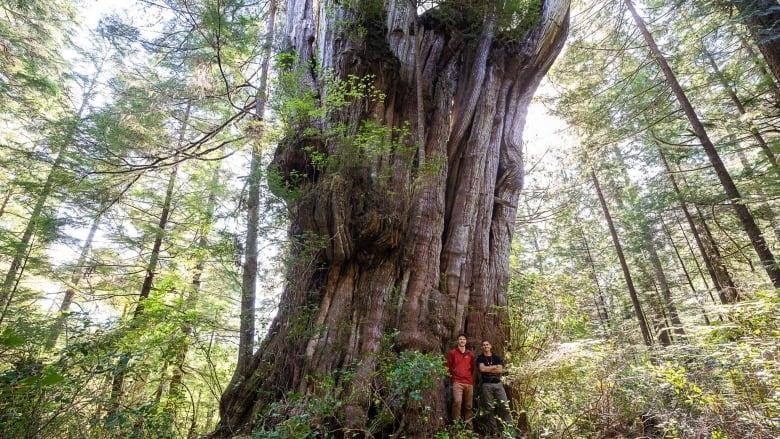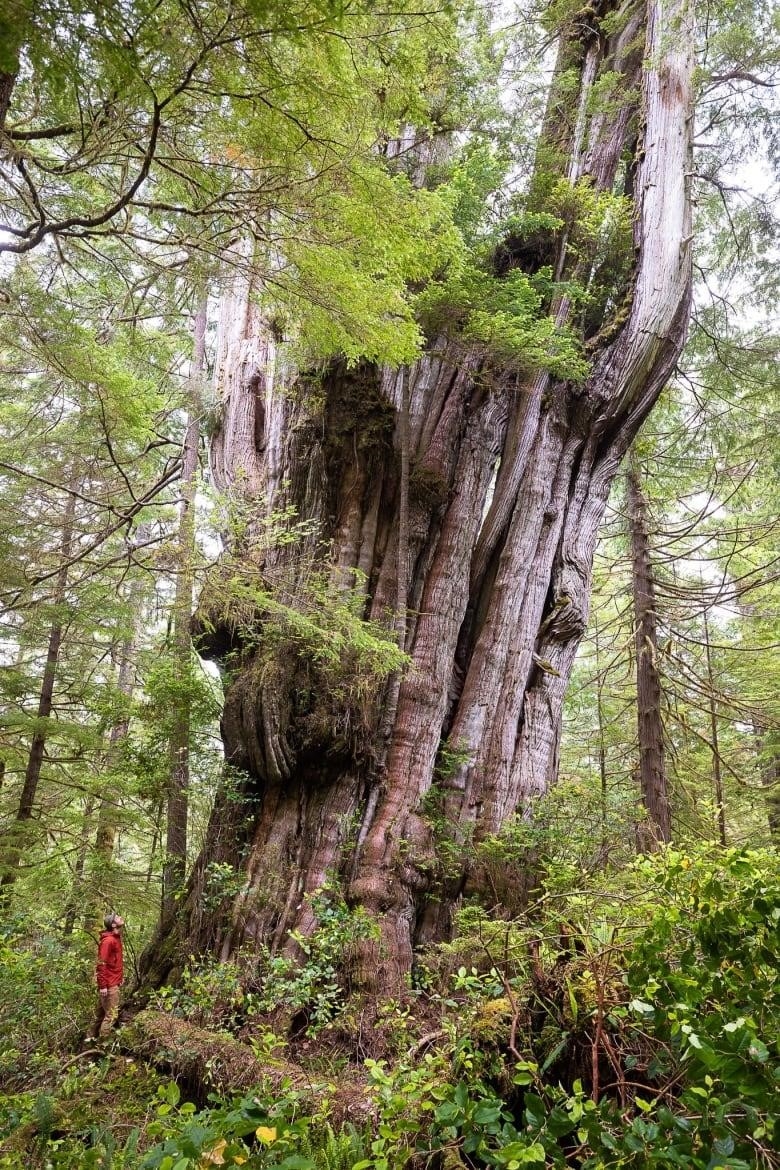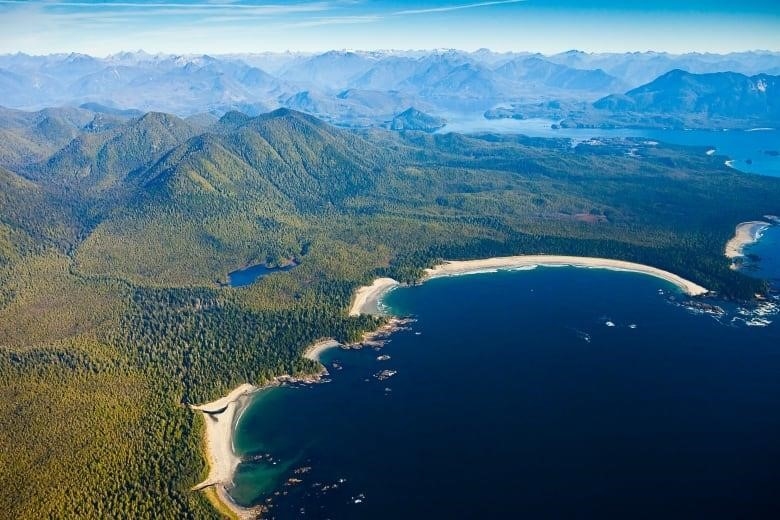
TJ Watt says that the 46-meter-tall Western red cedar near Tofino is a leviathan of a biodiverse ecosystem
TJ Watt, who lives in Victoria and is 39 years old, has been hiking through the province’s vast and green landscape for 20 years looking for huge, old trees to document and make a case for saving them.
Now, when the number of very big trees is getting smaller because of logging, he has recorded what he calls the tree of his lifetime.
“This tree is the most amazing tree I’ve ever seen,” he said. “It is literally a wall of wood.”
Watt took a picture of the Western red cedar tree on Flores Island in fabled Clayquot Sound on Ahousaht First Nations land in 2022 while he was on a field trip for National Geographic and the Royal Canadian Geographical Society. (The species is also written as redcedar, even though it’s not really a cedar.)
It is thought to be 46 meters high and 5 meters wide at the bottom.Watt says that the old-growth tree is probably at least 1,000 years old. It is part of a forest that stores carbon and is home to many plants and animals.
It is one of the largest and oldest trees in the province and in all of Canada, based on its size.
Watt said, “Unlike most trees, this one gets wider as it grows taller.” “Finding something this amazing is really the best thing that’s ever happened to me.”

Watt and the Ahousaht First Nation have now shown pictures and information about the tree to the public, but they haven’t said where it is. They did this to show how important it is for the province to keep its promises to change forestry so that harvesting doesn’t hurt the environment.
Tyson Atleo, 36, a hereditary representative of the Ahousaht First Nation, said, “It shows a healthy, whole, coastal, temperate ecosystem.” “We don’t see many trees that big these days.”
The tree has been called “The Wall” or “iiaq umiis,” which in the Nuu-chah-nulth language means “big redcedar.” It is in a type of forest that is in danger of going extinct in B.C. because it has been cut down so much in the past.
Watt said, “Forests like this have been cut down to a tiny, tiny part of what they used to be.” “Given the climate and biodiversity crises, we need to do everything in our power to make sure they stay standing.”
The tree is not in danger of being cut down right now because it is in an area where cutting down old-growth trees is being put off. This is part of a plan between First Nations and the province to protect old-growth forests that are at risk of losing their biodiversity forever.

The Ahousaht First Nation, whose land includes the internationally known biosphere reserve Clayoquot Sound, is at the forefront of efforts to save important trees in biodiverse forests and find other ways to make up for lost income, such as through tourism.
Atleo said, “It’s a great chance to show [visitors] who we are as Ahousaht and what our values and principles are. It’s also a chance to show [visitors] the magic of our territories, which is shown by this amazing tree.”
Ahous Adventures, an eco-cultural tour company in Tofino that is owned and run by the Ahousaht, won’t take people to the tree to protect the area, but it does other tours to show off the area’s other beautiful trees.
‘An ecosystem unto itself
Nations like the Ahousaht are hoping that the province will give them more money for conservation so that they can create new ways to make money on their land that will help trees like the iiaq umiis stay standing.
The Ahousaht have set up a voluntary stewardship fee for its territories. This is similar to the day-use passes that B.C. Parks sells.
Others, who make a living looking for and writing about the largest old-growth trees that still exist, say that finding trees like The Wall is like a religious experience.
“You feel so small, and you realize that these things are so very important. They stand for a lot more than just a tree. Colin Spratt, a conservation photographer who gives tours of Vancouver’s Stanley Park to show off its old-growth trees, said, “It’s its own ecosystem.”
